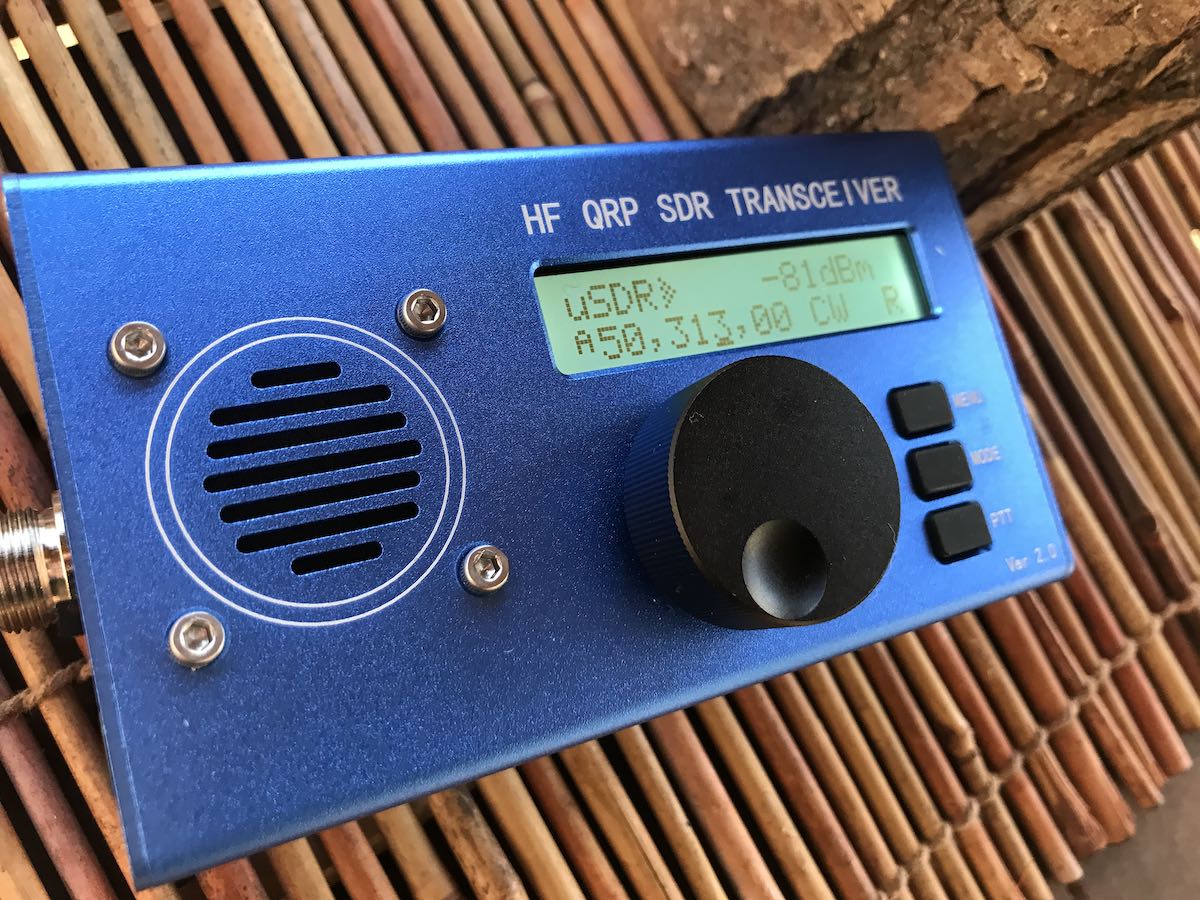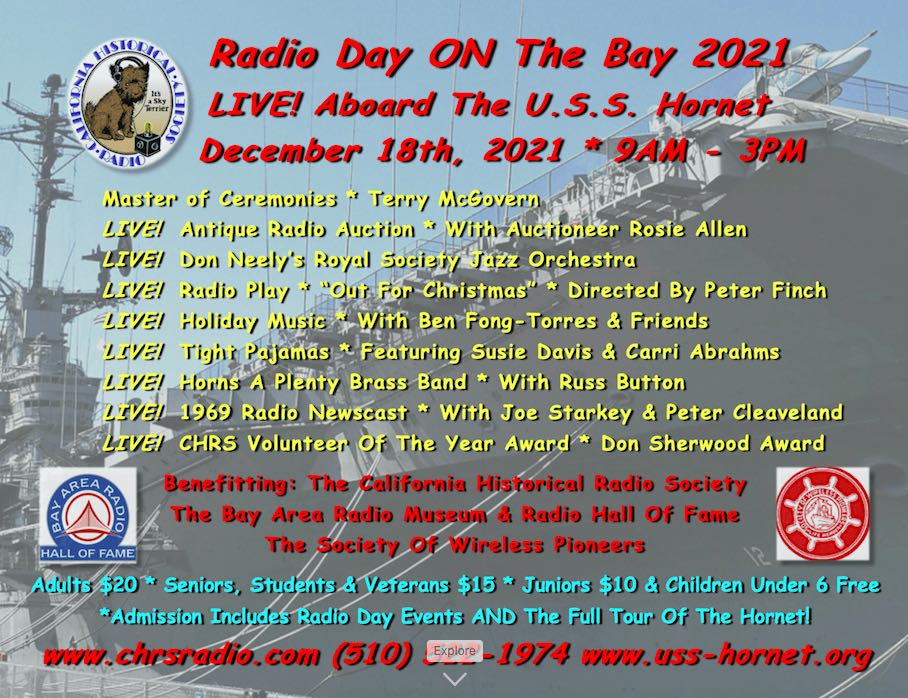Radio Waves: Stories Making Waves in the World of Radio
Because I keep my ear to the waves, as well as receive many tips from others who do the same, I find myself privy to radio-related stories that might interest SWLing Post readers. To that end: Welcome to the SWLing Post’s Radio Waves, a collection of links to interesting stories making waves in the world of radio. Enjoy!
Ham Radio SSB Transceiver Fits in Pocket (Hackaday)
Talking about this Chinese ham radio transceiver requires a veritable flurry of acronyms: HF, SSB, QRP, and SDR to start with. [Paul] does a nice job of unboxing the rig and checking it out. The radio is a clone of a German project and provides a low-power radio with a rechargeable battery. You can see his video about the gear below.
SSB is an odd choice for low power operation, although we wonder if you couldn’t feed digital data in using a mode like PSK31 that has good performance at low power. There are several variations of the radio available and they cost generally less than $200 — sometimes quite a bit less.
There isn’t much on the front of the radio. There are a few buttons, a rotary encoder, and an LCD along with a speaker and microphone built-in. There are ports for power to run the radio if you want to not use the battery and a separate port for battery charging. There are also ports for a key, external microphone and speakers, and audio connections that look like they’d work for digital modes. According to commenters, the radio doesn’t have an internal charging circuit, so you have to be careful what you plug into the charging port. [Continue reading…]
(SIDE NOTE: I have been testing one of the USDX / USDR transceivers (a Chinese version–not the open source homebrew project) over at QRPer.com and have been very displeased with performance. So much so, I returned it for a refund. One of the biggest issues being spurious emissions that were produced in harmonics, but also the receiver is one of the worst I’ve ever tested. -Thomas)
Radio Day ON The Bay 2021 – LIVE! On The U.S.S. Hornet (California Historical Radio Society)
“Radio Day ON The Bay 2021 – LIVE! Aboard The USS Hornet is Saturday!
We will be holding Radio Day on the Hornet where there is plenty of room to spread out. It will be on the enormous hanger deck. It’s covered but has huge doors that open for plenty of fresh air. It will be a holiday themed program and all of our favorites are back.
TICKETS AT THE SHIP: No pre sales. NOTE: Usually when CHRS hosts Radio Day, we charge a $10 entrance donation. This time, the Hornet’s usual entrance fees apply. They are: $20 for Adults – $15 for seniors, students or veterans – $10 for Juniors – And children under 6 are Free. Not only are these admissions to the Radio Day events, you are also entitled to enjoy the gigantic, historic USS Hornet including tours of the ship. The Hornet requires guests to wear masks on the ship.
LIVE STREAMING: Can’t make it to the Hornet? Once again we will Live Stream the entire event on a live YouTube channel. THIS IS THE LINK FOR THE LIVE STREAM OF THE ENTIRE EVENT https://www.youtube.com/watch?v=GzNf6aZP_9s
LIVE AUCTION: Almost 100 lots of some of the finest antique radios CHRS can offer. We have table radios & floor standing radios. All restored, ready to play and most equipped with the ability to play your music through these antiques. Also some nice hi-fi and stereo gear. Our Live Auctioneer, back by popular demand is Rosie Lee Allen, BARHOF Class of 2008. [Click here to continue reading and view schedule…]
The History of Space Weather: From Babylon to the 21st century (Amazon.com)
Many thanks to SWLing Post reader, Dr. Sten Odenwald, who notes that his new book, “The History of Space Weather: From Babylon to the 21st century” is now available on Amazon.com (affiliate link).
He shares the following description:
This book covers the history and science behind solar storms and space weather and how it has impacted human technology and thinking since the time of the ancient Babylonians. Using newspaper accounts and historical records, the many ways that space weather have impacted humans is explored from first-hand accounts. Also, the science behind space weather is explored starting with the birth of our sun, through modern supercomputer modeling of the Space Age.
Space weather begins below the surface of our sun and through solar flares, coronal mass ejections and the solar wind, washes ashore many diverse phenomena on our planet. Solar storms cause electrical power outages, satellite failures, shortwave radio interference and enhanced radiation doses to passengers on jets as well as astronauts working in space.
This book begins with ancient reports of gods batteling in the skies, and advances to telegraph interruptions in the 1800’s described my numerous newspaper reports. Then in the 20th century we see radio broadcast interference, incidents during World War II and the Vietnam War, as well as a growing list of satellite malfunctions during the space age. Meanwhile, scientific knowledge grows by leaps and bounds as astronmers discover the sunspot cycle, and powerful telescopes begin to monitor the sun on the ground and in space to stay ahead of the sun’s stormy weather.
Today, the news media carry routine reports of impending storms and enterprising social media broadcasters give us up-to-the-minute detailed scientific reports of what to expect. Science continues to advance as powerful physics-based models are being run on supercomputers to anticipate the shape of the next sunspot cycle and how storm clouds spotted on the sun, may travel to Earth in the ensuing days to rock-and-roll our technology and even our psyches!
Among its 370 pages, the book includes 296 B/W and full-color illustrations, hundreds of newspaper headlines, and extensive scientific background information describing all aspects of the human impacts of space weather. Also included is a chapter on DIY space weather forecasting in which you can download apps to your smartphone to monitor space weather, build your own magnetic storm detectors, or join citizen science groups where thousands of enthusiasts help scientists understand space weather even better.
Click here to view on Amazon.com.
PSK31 on 437 MHz from the Moon (AE5X.com)
Back in 1969, Larry Baysinger W4EJA and a friend were able to copy AM voice comms from Apollo 11 after it landed on the moon. They used a receiver from an Army tank and a homebrew “corner reflector” antenna.
I first heard about this accomplishment about 12 years ago and was able to find very little technical info about it online – so I did a little searching, found Larry’s number in Kentucky and called him on the phone. He had no email address that I was able to find.
We spoke briefly to coordinate a time when I could call again for a more detailed conversation. That conversation lasted just under an hour.
It was amazing to hear Larry tell the story in his own words, filling in details that were missing from the online and newspaper resources that were available. [Continue reading at AE5X.com…]
Do you enjoy the SWLing Post?
Please consider supporting us via Patreon or our Coffee Fund!
Your support makes articles like this one possible. Thank you!




I’ve always been suspicious of that 1969 story.
There was interest at the time, Frank Jones had a 230MHz converter in CQ for one of tye frequencies that they knew were going to be used. CQ also had a two part article in 1968 or 69 about the Apollo communication system that would be used on the moon.
People did try, and had no success in 1969. Acouple of moonbouncers did try, I remember reading something in CQ. Paul Wilson, and I think Dick Knadle, had an artticle or two later about successfully hearing some signals on a later mission in QST. That included a good description of their equioment (two separate stations, slight!y different equipment). If I understand it, Paul used the converter he described in QST in April 1971, a 2304MHz coverter that was “cutting edge” but still used tubes. And he needed a parametric amplifier ahead of it.
So how did some guy succeed? It makes a good story, a surplus tank receiver, but it gives no details. And more important, why was it not in the ham and even hobby electronic magazines shortly after?
When a UK ham received satellite photos with home made equioment about 1965, it was news, and CQ covered it. Nasa or the satellite company was so interested that they flew the guy to the states and gave him a tour.
But we don’t get real details about this guy. And while he’was a ham, it is completely isolated from ham radio. I recall reading something from shortly after the first moon landing (though a few years after the fact) that 230MHz had not been a useful frequency for reception. So it’s not justnlack of details, but why did this guy succeed when others more capable didn’t?
Read QST for June 1972.
People give travel to stories without question or without other context. People read that story a decade or so ago, “that sounds neat” and passed it on. But I seem to be the only one who remembers those magazine articles current with the Apollo missiins. Even the ARRL passed along the story without knowing what they’d published decades before. If they can’t add context, can they evaluate the story?
Correct spelling of Transceeever in headline 😉
“Radio Waves: Pocket SSB Transciever,”
Fixed! Thank you!